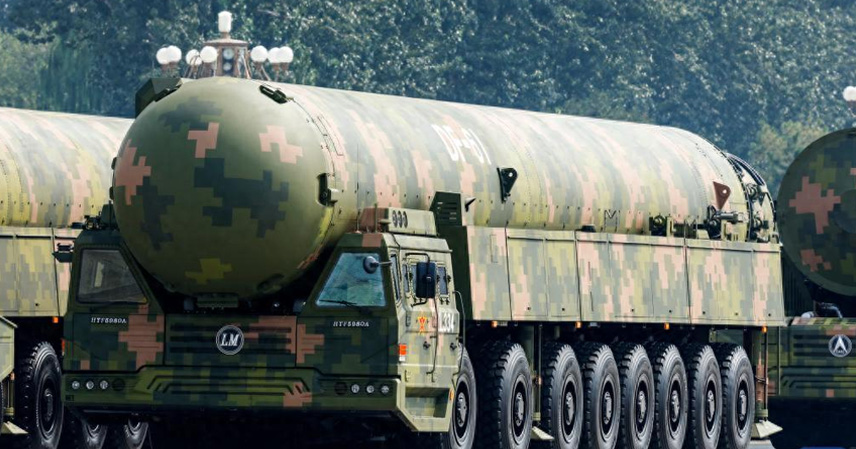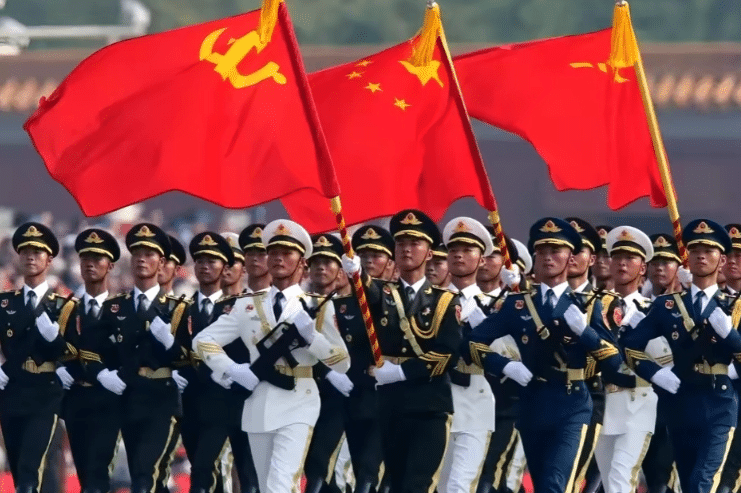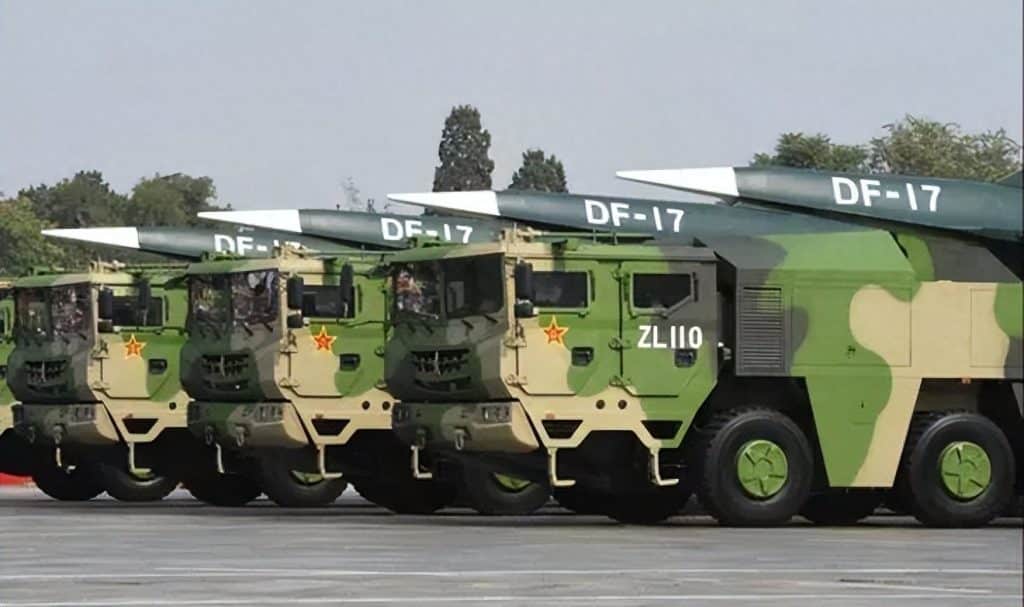China’s DF‑61 intercontinental ballistic missile (ICBM) made a high‑profile appearance at the recent 9/3 parade marking the 80th anniversary of the end of World War II. Presented as an evolution of the earlier DF‑41, the DF‑61 is being framed in public commentary as a cleaner, lighter, more reliable and more flexible land‑based strategic weapon. What exactly is new — and why does it matter?
From DF‑41 to DF‑61: evolution rather than revolution
The DF‑41 was China’s first widely publicized road‑mobile ICBM with an advertised range on the order of 14,000 km and multiple independently targetable reentry vehicles (MIRVs). It filled a capability gap for China’s Rocket Force, but analysts noted that some technologies reflected prolonged development timelines and incremental upgrades over an older engineering lineage.
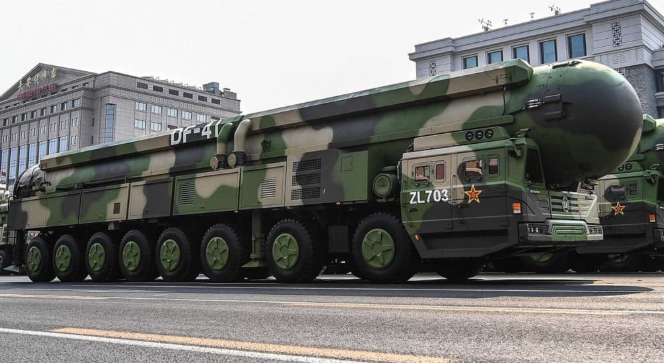
The DF‑61 appears to be a purposeful modernization of that family, designed to reduce cost and maintenance burden while improving operational performance. Public reporting and parade disclosures emphasize several key technical and operational trends:
- New solid‑propellant, three‑stage motor. DF‑61 reportedly uses a next‑generation three‑stage solid rocket motor with improved specific impulse and lower manufacturing cost versus the DF‑41’s earlier motor design. That combination boosts range and reduces logistical complexity associated with liquid fuels.
- Lighter airframe materials. Advanced structural materials and shell technology reduce missile mass, enabling either greater range or heavier payload options for the same launch mass.
- Greater range and flexible trajectories. With similar MIRV loads (public commentary cites three warheads in the tens‑of‑kilotons class as an illustrative configuration), DF‑61’s maximum range is often stated around 15,000 km, increasing its options for flight profiles and potential penetration trajectories.
- Improved guidance and accuracy. DF‑61 reportedly integrates high‑performance inertial navigation complemented by BeiDou satellite‑aided corrections, with a claimed circular error probable (CEP) on the order of 100 meters — a level consistent with modern strategic systems using satellite augmentation.
- Penetration and survivability measures. The missile family is described as carrying countermeasures: deployable decoys, maneuverable reentry vehicles, and other means to complicate missile‑defense discrimination and interception.
- Operational flexibility. Like the DF‑41, DF‑61 is shown deployed on multi‑axle transporter‑erector‑launchers (TELs) with “store‑transport‑launch” canister systems and a self‑adaptive launch base interface. Command and launch infrastructure is reportedly digitized to permit rapid, low‑manpower launch sequences under emergency conditions.
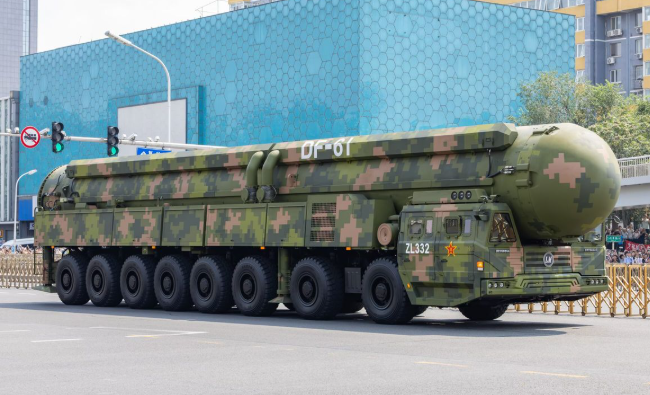
Strategic implications: deterrence, signaling, and stability
The DF‑61 should be read as part of an incremental strengthening of China’s land‑based strategic deterrent rather than as a single disruptive leap. Still, the combination of improved range, MIRV capability, better accuracy, and enhanced survivability has several meaningful implications:
- More flexible coverage. A missile with ~15,000 km range and road‑mobility increases options for targeting and flight routing, broadening strategic reach and complicating an adversary’s planning.
- Enhanced second‑strike survivability. TEL mobility, quick reaction procedures, and survivability countermeasures improve the survivable posture of land‑based forces. That, in turn, stabilizes deterrence by ensuring adversaries cannot easily eliminate China’s retaliatory capacity in a first strike.
- Penetration challenge for missile defenses. Multiple decoys and maneuverable warheads increase the cost and difficulty of successful intercepts, reducing confidence in purely defensive architectures.
- Arms control and crisis dynamics. Upgrades like MIRVed mobile missiles complicate arms‑control verification and transparency. They also raise the political salience of command‑and‑control, early warning, and de‑escalation channels in a crisis.
- Signaling effect. Public parade displays serve both domestic cohesion and international messaging — highlighting modernization and operational readiness while signaling to potential adversaries that China’s strategic posture is evolving.
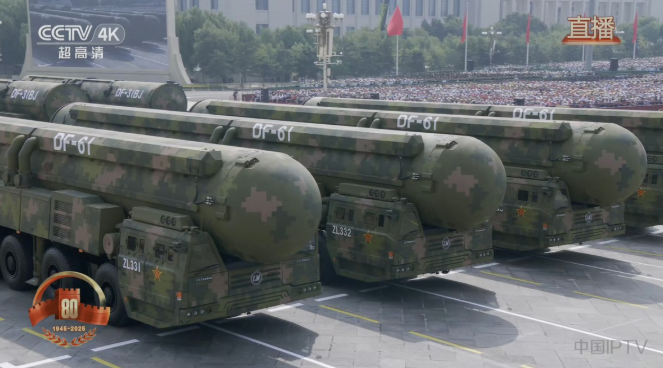
Caveats and perspective
Public descriptions and parade disclosures do not equate to full technical transparency. Parade appearances and official summaries highlight capabilities, but they do not substitute for verified performance data or operational doctrine. A few cautionary reminders:
- Operational deployment timelines matter. Fielding at scale is a logistics and training exercise; declared performance on paper may require time and routines to translate into reliable operational readiness.
- Context within a diversified triad. DF‑61 joins existing land‑based systems (e.g., DF‑5, DF‑31 variants, DF‑41) along with China’s sea‑ and air‑based nuclear capabilities. Its strategic effect depends on how it integrates into broader force posture and doctrine.
- Arms‑control impact. More capable, mobile MIRVed missiles complicate future negotiations and verification regimes; they make mutual confidence‑building measures more important — yet politically more difficult.
Bottom line
The DF‑61 appears to be an evolutionary but meaningful step in China’s land‑based strategic modernization: greater range, improved reliability, higher accuracy, and enhanced survivability. For policymakers and analysts, the missile underscores two enduring realities: (1) nuclear modernization is incremental and system‑wide, not limited to single headline systems; and (2) advances in mobility, countermeasures, and guidance continue to shape deterrence dynamics and the strategic calculus of potential adversaries.
As always, public displays and official descriptions provide signals rather than complete technical dossiers. The DF‑61’s appearance is important because it reveals where Chinese planners prioritize force posture today — survivable, flexible, and increasingly precise land‑based deterrents — and because those priorities will influence regional and global strategic debates in the years ahead.
References
- Open‑source reporting and official parade disclosures (public domain coverage).
- Background literature on DF‑31/DF‑41 family and modern MIRV/survivability trends.

